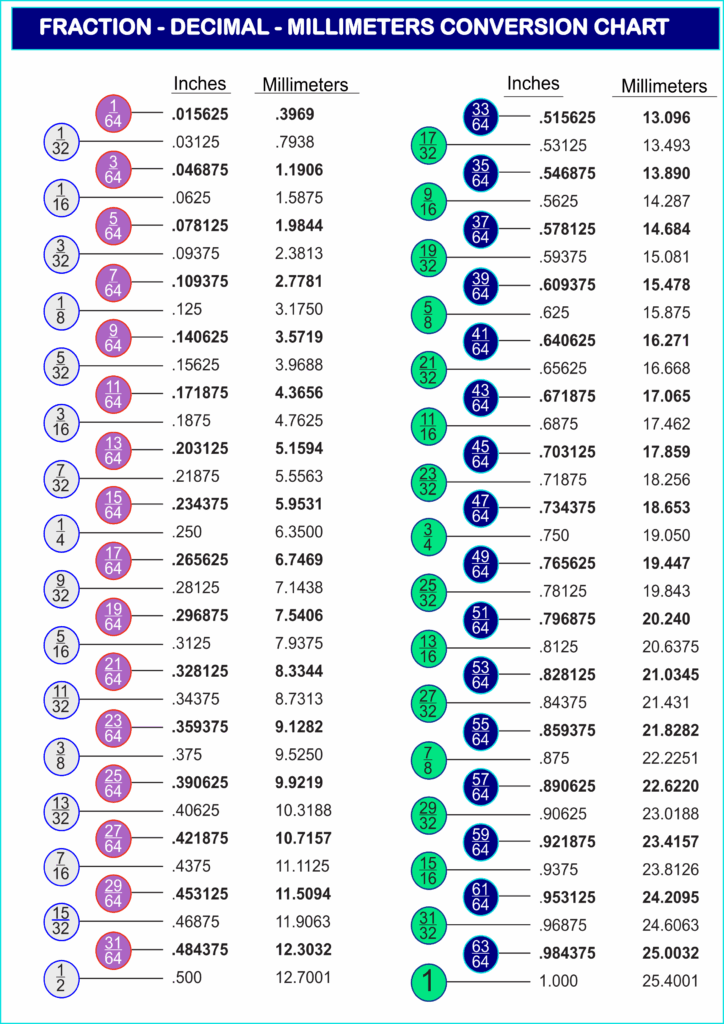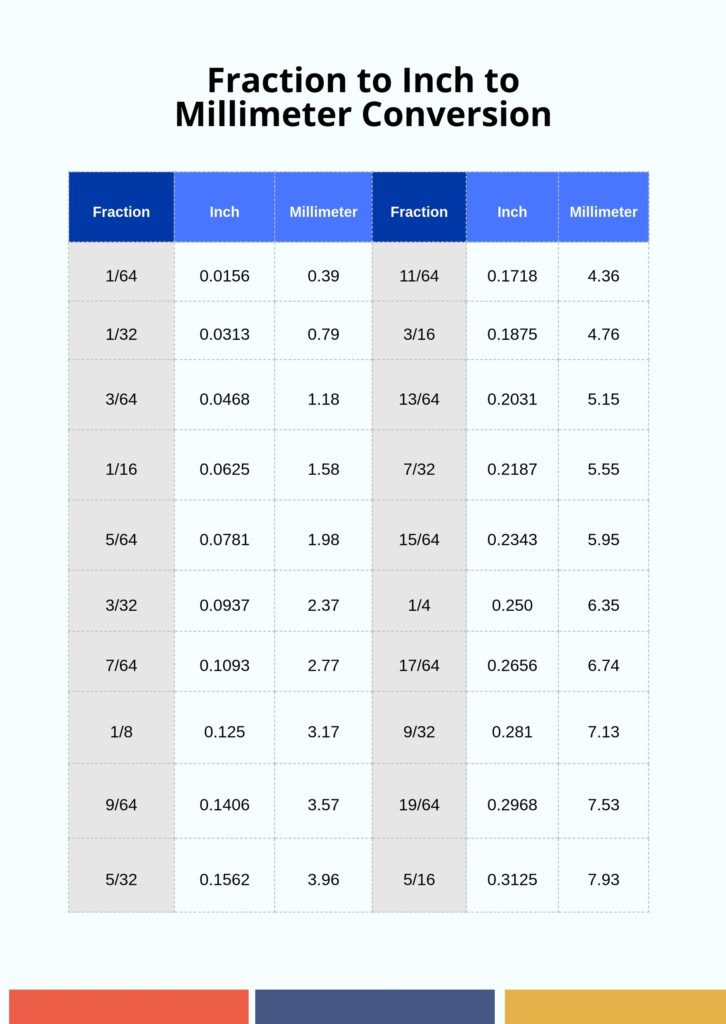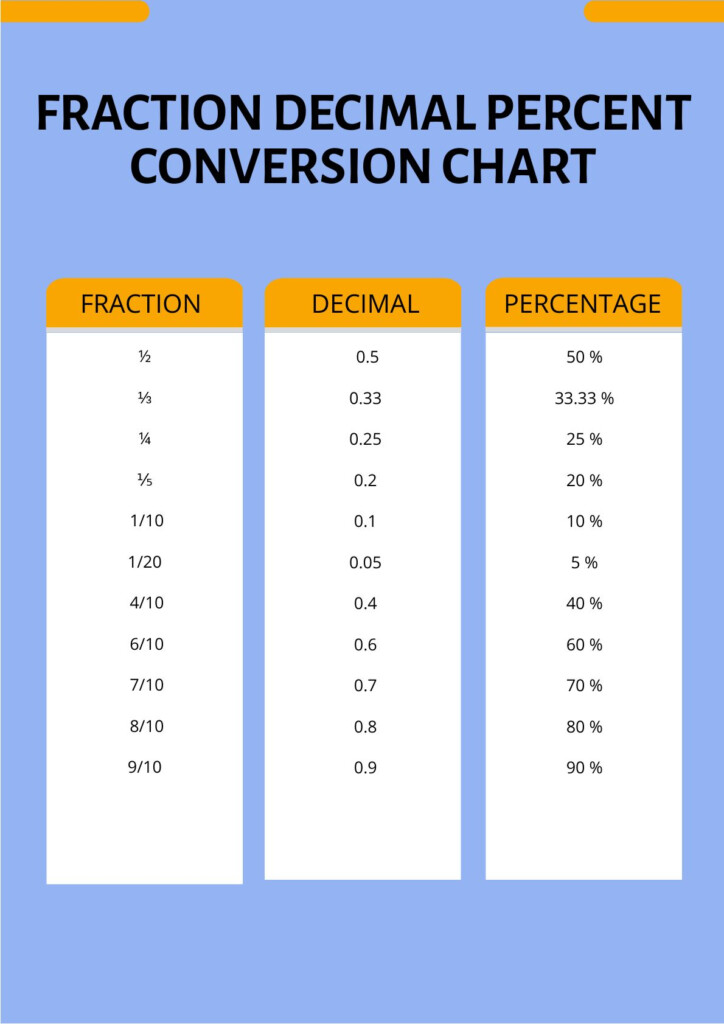Converting decimals to fractions is a common task in mathematics and everyday life. A decimal is a number expressed in the base-10 numeral system, while a fraction represents a part of a whole. The process of converting a decimal to a fraction involves understanding the place value of each digit in the decimal and expressing it as a ratio of two integers.
To convert a decimal to a fraction, you need to determine the place value of the last digit after the decimal point. This digit represents the denominator of the fraction. The number of decimal places will determine the power of 10 in the denominator. For example, a decimal like 0.25 can be expressed as 25/100, or simplified to 1/4.
Conversion Chart From Decimal To Fraction
Converting Decimal to Fraction Chart
Below is a conversion chart that can help you quickly convert decimals to fractions:
| Decimal | Fraction |
|---|---|
| 0.1 | 1/10 |
| 0.2 | 1/5 |
| 0.25 | 1/4 |
| 0.33 | 1/3 |
| 0.5 | 1/2 |
Tips for Decimal to Fraction Conversion
When converting decimals to fractions, it’s helpful to simplify the fraction by dividing the numerator and denominator by their greatest common divisor. This will give you the simplest form of the fraction. Additionally, familiarizing yourself with common decimal to fraction conversions, like 0.25 to 1/4, can make the process faster and easier.
Remember that fractions can also be expressed as mixed numbers or improper fractions, depending on the context of the problem. Practice converting decimals to fractions to improve your math skills and make calculations more efficient.
By following these tips and using the conversion chart provided, you can easily convert decimals to fractions in various math problems and real-life situations.
Download Conversion Chart From Decimal To Fraction
Fraction Decimal Millimeter Conversion Chart In Illustrator PDF
Fraction Decimal Conversion Chart Printable


